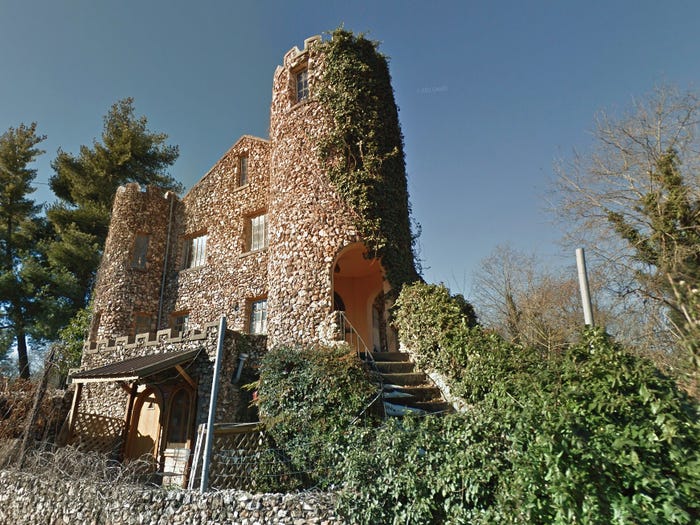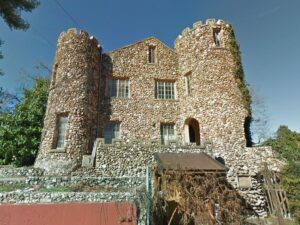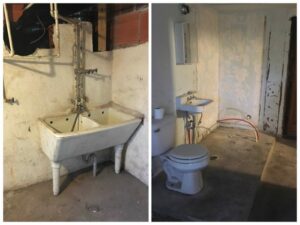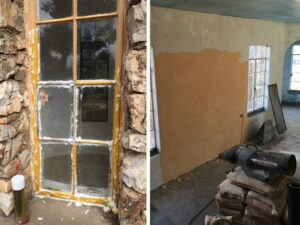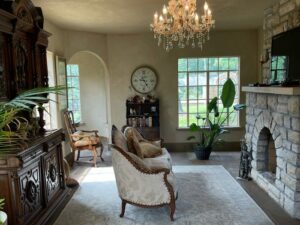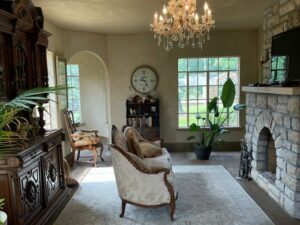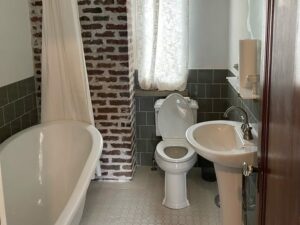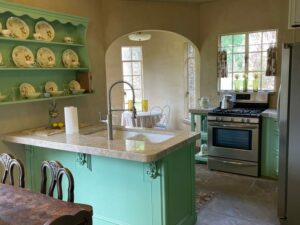At the point when Mike Shelton originally looked at the Franklin Castle in Oklahoma, it was self-destructing. The castle was which constructed in 1931, was a shell of its previous self — it was canvassed in plants and the interiors were destroyed by water spills.
Mike Shelton, the proprietor of a Mansonry Company , purchased a notable Oklahoma Castle for $180,000 in 2015.
According to him he’s spent around $100,000 over three years to redesign the architecture of the castle.
The property, otherwise called Franklin Castle, is presently available to be purchased for $750,000.
“It was in awful decay, nearly to the point that someone could have even thought to be destroying it,” Mike Shelton, the ongoing proprietor of the palace, told reporters .
Yet, for Shelton, who owns a Mansonry Company , the palace’s unpredictable stonework stood out.
“The extraordinary design grabbed my attention, and it seemed like something to attempt to save,” he said.
He went through right around a decade looking at the property before he had the valuable chance to get it for $180,000 in September 2015, per property records.
Presently, he utilizes it as an events venue for weddings and gatherings, according to a website committed to the palace.
Despite the fact that it was recorded in the National Register of Historic Places in September 2006, the three-story palace sat empty for right around 10 years before Shelton got it.
By then, large numbers of the palace’s unique elements had self-destructed. The windows were broken and the roof had collapsed, causing water spills. The veneer of the palace was overwhelmed by plants and weeds were filling in the nursery.
Franklin Castle is situated in Tahlequah, a city in Cherokee County, Oklahoma.
It was constructed in 1931 by Marion E. Franklin, a Northeastern State University teacher.
“Every one of the exterior and the stones were reestablished back to unique. We likewise rescued every one of the windows,” he said. “I feel that meant a lot to keep that look.”
Indeed, even the insides required broad work.
“We likewise re-put every one of the dividers within — they were not doing so great. We had the option to save a few entryways and we reestablished them back to unique . They actually have all their unique pivots and handles,” he added.
In spite of the restorative level destruction, Shelton observed that the palace’s dividers and establishments were strong.
All of the wood floors were spoiled from water destruction, so we needed to haul those out and re-try them in normal stone,” Shelton said.
The first metal chimney was at this point not practical, so he remade the chimney out and out.
The first restrooms were old and disgusting, so he needed to place in new lines and clean products. He then changed over a previous utility room into an ensuite restroom for one of the rooms.
I
“The palace very had cooling until I remodeled it — they in every case just opened the windows and let the air blow through, so the cooling framework was a major expansion to the palace,” he said.
The sanctuary, it’s separated from the palace — it was never essential for that property,” he told reporters . “It was nearby and I bought that property around two years after I got the palace. It used to be an old high rise.”
Shelton paid $100,000 for it in 2017, per district records.
He fabricated the sanctuary in a similar compositional style as the primary palace, with an uncovered stone exterior.

